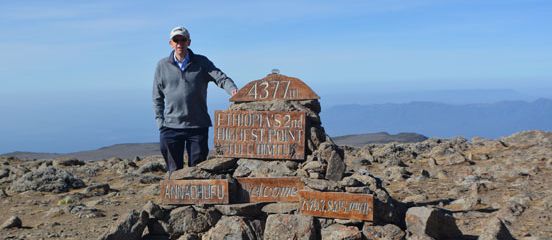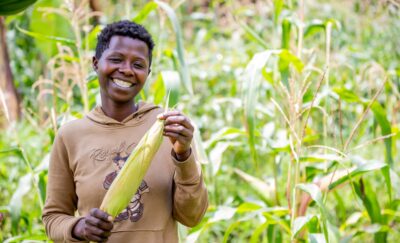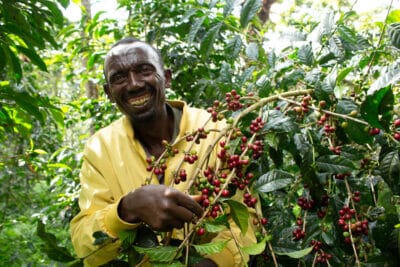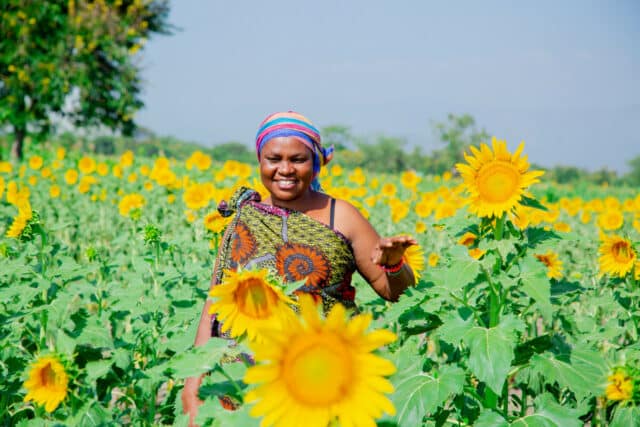Expert view
4 March 2015
Postcard from Ethiopia: Man and nature in a cup of coffee

It’s 7.30am, and Farm Africa’s country director John Morris and I are looking at a seemingly endless view. We’re standing on Tulu Dimtu, Ethiopia’s second highest point at 4377m, looking out over a remarkable landscape of rock, dotted with giant lobelias which can grow to 6m high.
They call it “Afro Alpine”; at this height, it’s seriously cold, and we can feel the wind blowing through our various layers. But we congratulate ourselves on having seen the elusive Ethiopian wolf – in fact, a pair of them. More like a fox in appearance, it’s Africa’s most threatened carnivore, unique to Ethiopia. Only five hundred are estimated to exist, with many in the Bale National Park, where we are now.
But John and I aren’t here as tourists, or as wildlife enthusiasts. We’re here to visit a couple of Farm Africa’s most remarkable projects, which support communities living in the so-called “buffer zone” around the edge of this amazing national park. Returning to our vehicle, we proceed to the Harenna forest, dropping some 3,000m in around thirty minutes of driving down a dirt road.
We pass baboons sitting on the side of the road, as we return to the tropical forests, rapidly removing fleeces as the temperature rises from zero at the top of the mountain to around 30C. Greeting the local community, we sit to listen just how the correct management of the forests can change not only the environment for the better but also the lives of those living here.
Forest management
Participatory forest management – not the snappiest phrase, I’ll admit – is an area where Farm Africa excels. Our teams work alongside local communities in Bale, helping them manage their most precious resource – the forest – and establishing formal agreements with local government agencies.
Hasan, the chairperson of the community group, explains what this means in practice. “We patrol the forest, protecting against fire, checking for illegal grazing, preventing destruction of the forest, ensuring the trees are looked after. Community members who are caught breaking the regulations are subject to sanctions, including fines and in extreme cases being removed from the co-operative.”
Sounds good, but is it only about environmental conservation? After all, you can’t eat conservation. A second Farm Africa project answers that challenge. We’re also working with the same community on coffee. This is Arabica coffee, growing wild, in Ethiopia, the “birthplace of coffee.” You won’t taste better, even in the swankiest coffee shops in Europe.
There is a tremendous opportunity to create real cash incomes for these communities from this crop. Our teams are advising on quality control, on harvesting, on simple techniques like proper drying to maintain the freshest quality. Awal, one of the co-operative members, shows me his hut; it’s full of 70kg bags of coffee ready for market, enough to guarantee a good income for him and his family.
But this is the key point. Coffee needs shade to grow. When the forest was under threat, degraded, with no undergrowth, the coffee harvest was much less. Since the forest has been managed effectively, regeneration has come, with increased coffee yields as a consequence. The ideal mix of Farm Africa’s work. Income generation and sustainable environmental management all in a cup of coffee.
And does this matter in human terms? I ask Awal what the effect has been. With a smile and with pride he answers that he has a better home, a corrugated iron roof and he has sent six children to school. None of this would be possible without the forest – or Farm Africa.




